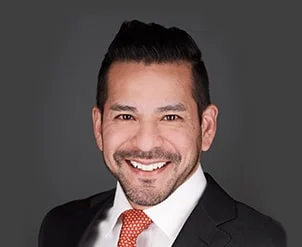Breaking Down Bankruptcy Student Loan Forgiveness Requirements

Student loan forgiveness has been one of the most controversial issues of the past decade. Many people believe former students need and deserve relief from oppressive loan payments. Others feel that tax dollars could be better spent elsewhere. In the midst of all the sound and fury, the Department of Justice amended its student loan discharge requirements for Chapter 7 and Chapter 13 bankruptcy. This modification didn’t completely eliminate the harsh existing rule in many states, but it did make some debtor-friendly modifications.
Distressed student loan debtors now have a historic opportunity to discharge their student loans and move forward with their lives, but only a good Chicago bankruptcy lawyer can help them take advantage of this opportunity. Student loan lenders, who staunchly opposed general student loan forgiveness, also staunchly oppose student loan bankruptcy discharge. So, an attorney must know the law and be ready for a fight.
Current Circumstances
The assessment of the debtor’s current financial circumstances begins with the IRS standard allowable expenses. Quite simply, if the debtor is in the red, the debtor cannot maintain an adequate standard of living, and the evaluation moves to step two.
Allowable expenses vary significantly, usually according to geographic region. The cost of living is much higher in Chicago than in downstate portions of Illinois. Furthermore, some allowance categories are very subjective, such as the allowance for other necessary expenses and allowance for reasonable expenses not incurred. So, the debtor could be in the black every month from a financial perspective, and be in the red from an IRS perspective, especially if a Chicago bankruptcy lawyer advocates for the debtor.
In borderline income/allowable expense cases, the debtor is usually entitled to a partial discharge. During partial discharge settlement negotiations, the bank usually has a duty to compromise, if that’s what it takes to make a deal and avoid a hearing.
Future Circumstances
The prior Brunner rule, which governed student loan bankruptcy discharges for decades, was largely based on the concept of future inability to pay. Future earning capacity is presumptively insufficient to repay the loan if the debtor:
- Is over 65,
- Has been unemployed for at least five of the past ten years,
- Didn’t obtain a degree,
- Has a serious disability, or
- Has paid on the loan for at least the last ten years.
The debtor gets the benefit of the doubt in these situations. If the debtor assets that s/he cannot make the payments, the trustee (bankruptcy manager who works for the Department of Justice) must refute that claim with solid evidence, not theories and conjecture.
Good Faith
A good-faith effort to repay the loan was the other central tenet of the Brunner rule. Under the new standard, evidence of good faith includes:
- Making a payment,
- Applying for a deferment or forbearance (other than in-school or grace period
- deferments),
- Applying for an IDRP plan,
- Applying for a federal consolidation loan,
- Responding to outreach from a servicer or collector,
- Engaging meaningfully with Education or their loan servicer, regarding payment options, forbearance and deferment options, or loan consolidation, or
- Engaging meaningfully with a third party they believed would assist them in managing student loan debt.
The good faith standard also assesses criteria such as the debtor’s efforts to obtain employment, maximize income, and minimize expenses.
Contact a Savvy Cook County Lawyer
No matter what kind of financial problem you are having, bankruptcy could be a way out. For a free consultation with an experienced bankruptcy attorney in Chicago, contact the Bentz Holguin Law Firm, LLC. We routinely handle matters throughout the Prairie State.
Source:
justice.gov/d9/pages/attachments/2022/11/17/student_loan_discharge_guidance_-_guidance_text_0.pdf


